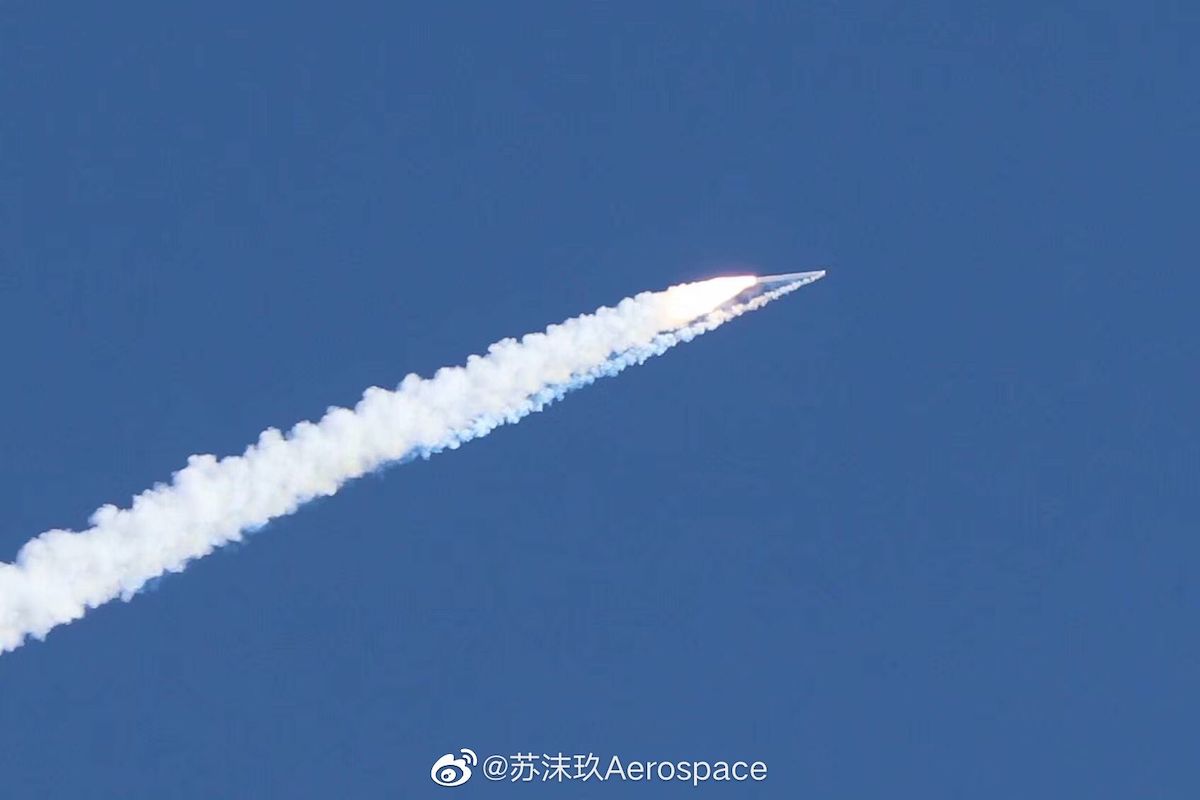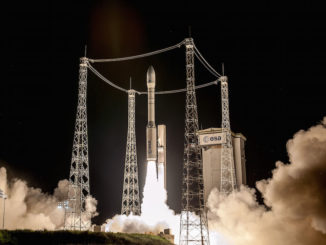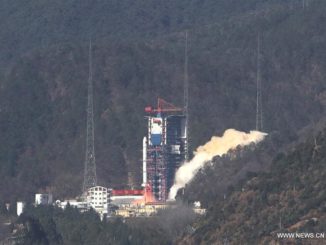
The second orbital launch attempt by Chinese launch company iSpace failed shortly after liftoff Feb. 1, following a successful debut flight in 2019 that made iSpace the first private firm in China to put a payload into orbit.
The Hyperbola 1 rocket took off at 0815 GMT (3:15 a.m. EST; 4:15 p.m. Beijing time) on Feb. 1 from the Jiuquan launch base in the Gobi Desert of northwestern China. Imagery of the launch shared on Chinese social media websites appeared to show the four-stage rocket veering off course and losing control in the early phases of the flight, likely during the burn of its solid-fueled first stage.
In a statement posted on the Weibo social media platform, iSpace confirmed the launch failure.
“The rocket flew abnormally and the launch mission failed,” said iSpace, also known as Beijing Interstellar Glory Space Technology Ltd. “The specific reasons are being further analyzed and investigated.”
The company said it set up an investigation committee and a review committee to look into the cause of the failure. “We are well aware that the journey to space has never been smooth,” iSpace said.
The launch earlier this week was iSpace’s second try at reaching orbit. A successful Hyperbola 1 mission in July 2019 placed several small satellites into orbit, making iSpace the first in a new wave of Chinese companies to succeed in an orbital launch attempt.
The Hyperbola 1 rocket that launched Feb. 1 featured several differences from the launcher that flew in 2019. Observers comparing imagery of the two rockets noted that the second, third, and fourth stages on the second Hyperbola 1 mission were wider than the upper stages on the first Hyperbola 1 flight.
The second Hyperbola 1 rocket is also taller and can carry more payload into orbit than iSpace’s first rocket.
A brochure posted on iSpace’s website indicated the current Hyperbola 1 model stands about 78 feet (24 meters) tall, and produces about 92,500 pounds, or 42 metric tons, of liftoff thrust. It can deliver a payload of up to 660 pounds, or 300 kilograms, to a 310-mile-high (500-kilometer) sun-synchronous orbit, according to iSpace.
Chinese officials did not release any information about the satellites aboard the failed Hyperbola 1 launch this week.
Privately-run Chinese launch companies like iSpace are operated independently of China’s large state-owned aerospace firms, such as the China Aerospace Science and Technology Corp., or CASC. But despite new private investment into iSpace and other new Chinese space companies, many of the startups have received government assistance through funding, technology and know-how, or direct transfers of rocket hardware, such as surplus military missile stages.
The launch of the Hyperbola 1 rocket Feb. 1 was the third Chinese satellite launch attempt in 2021, followed two successful Long March rocket missions in January.
Email the author.
Follow Stephen Clark on Twitter: @StephenClark1.



